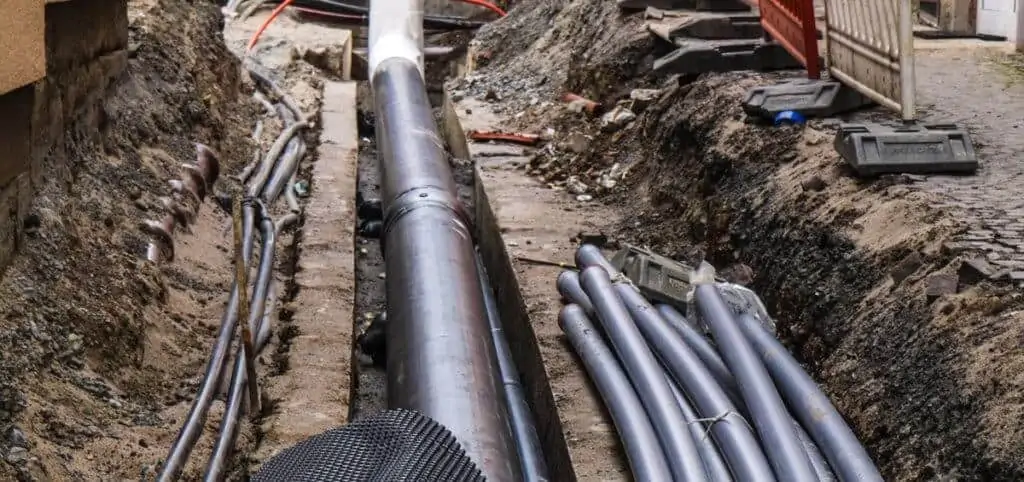When’s the last time you thought about backflow prevention? If your answer is “never”, you might want to change that sooner rather than later.
Over time, your water supply can be affected from contaminants that are introduced when water pressure weakens. This can happen if your water main is damaged or your pipes are frozen.
Ready for a frightening fact? There are more than 10,000 reported cases of backflow contamination each year – some cases are even fatal.
That’s where a backflow prevention device comes in handy – it prevents contamination or pollution from tainting your water supply. Here’s the lowdown on exactly what backflow is, how to prevent it and who to call for help.
What is backflow contamination?
In the field of plumbing, “backflow” is a term used to simply describe a reverse flow of water.
If this reversal of flow causes dirty water to flow back into a supply of clean water, it can taint the clean water with harmful chemicals and bacteria, hence the term “backflow contamination”.
This isn’t just an issue for big industrial businesses or utility providers like BC Hydro. Reversal of water flow can happen in your home and affect your drinking water.
The most basic example of backflow contamination is when the backflow from a toilet bowl water taints the toilet’s water supply tank. If that happens, you’ll most likely notice it in the form of dirty water and an unpleasant “sewer” smell.
What causes backflow?
Problems with backflow occur when there is a change in water pressure between two separate bodies of water.
Your water must be kept at a certain pressure level in order for it to be able to flow adequately from your tap, shower, toilet and any other appliance in your home. When there’s a change in the water pressure, it can disrupt the normally regular flow, causing the water in the system to “flow backward.”
These differences in pressure can be caused by things like:
- Pipe breakages
- Flooding and heavy rain
- Blockages and clogs
- Deteriorating seals
Backflow can also happen when there is nothing wrong with your pipes or the surrounding network of utility pipes. For example, if a fire crew were to use water from several fire hydrants close to your home, the water pressure would be lower due to the sudden surge of water usage.
How can backflow contamination be prevented?
Plumbing systems use what’s called a backflow prevention device to prevent water from reversing into homes or clean water supplies.
If you don’t have one in your home, your plumber can install a new backflow prevention device. Old or faulty backflow prevention devices can also be replaced.
There are two common approaches to backflow prevention:
A) Air Gap
Of the two options, this one is the simplest. It can be a very effective way to provide backflow prevention if you have room for it.
The gap is simply an open space between any device that connects to a plumbing system (like a valve or faucet). The one major downside to it is that – since it’s open to the air – it requires a place for any potential backflow to collect and drain away.
B) Specialized Backflow Preventer Valve
This handy device is installed at strategic locations within your plumbing system.
Wherever there’s a risk of contaminated fluids backing up and entering your water supply pipes or home, this device creates a tight seal which prevents that from happening. The device is compact and creates less potential mess, but it requires regular testing to ensure that it’s still capable of creating a tight seal when needed.
Is it just about drinking water safety?
Protecting your drinking water supply is important, but that isn’t the only reason why having reliable backflow prevention is important.
Backflow can end up contaminating vital water systems in a building, like:
- Fire prevention systems
- Commercial boiler systems
- Underground lawn irrigation
- Boiler systems with anti-freeze
Just think — without reliable backflow prevention and testing, sewage-tainted water could be sprayed across a lawn during the summer or throughout a building if a fire broke out.
This is why it’s crucial for homes and businesses to have backflow prevention.
Are backflow prevention devices mandatory?
In many parts of the world, approved backflow prevention assemblies are required by law and must be installed in accordance with plumbing or building codes.
Metro Vancouver is no exception! While requirements vary between municipalities, several require backflow prevention devices to be installed and tested annually in businesses and larger residential complexes. As an example, here’s the City of Vancouver’s guidance on backflow device installation and testing.
Typically, the installation and testing need to be completed by a licensed and certified plumbing contractor. They’ll help you record the results of the test and provide paperwork or digital files for you to submit to your municipality.
Get certified backflow device installation and testing
At Hillcrest Plumbing & Heating, we have over 50 years of experience working on the homes and businesses around Metro Vancouver.
Our licensed and certified technicians are ready to handle any backflow-related problems you encounter, whether it’s installing a backflow device, completing annual testing, or diagnosing signs of backflow in and around your property.
You can get a free, no-obligation quote by contacting us online or calling us at (604) 879-1415.

